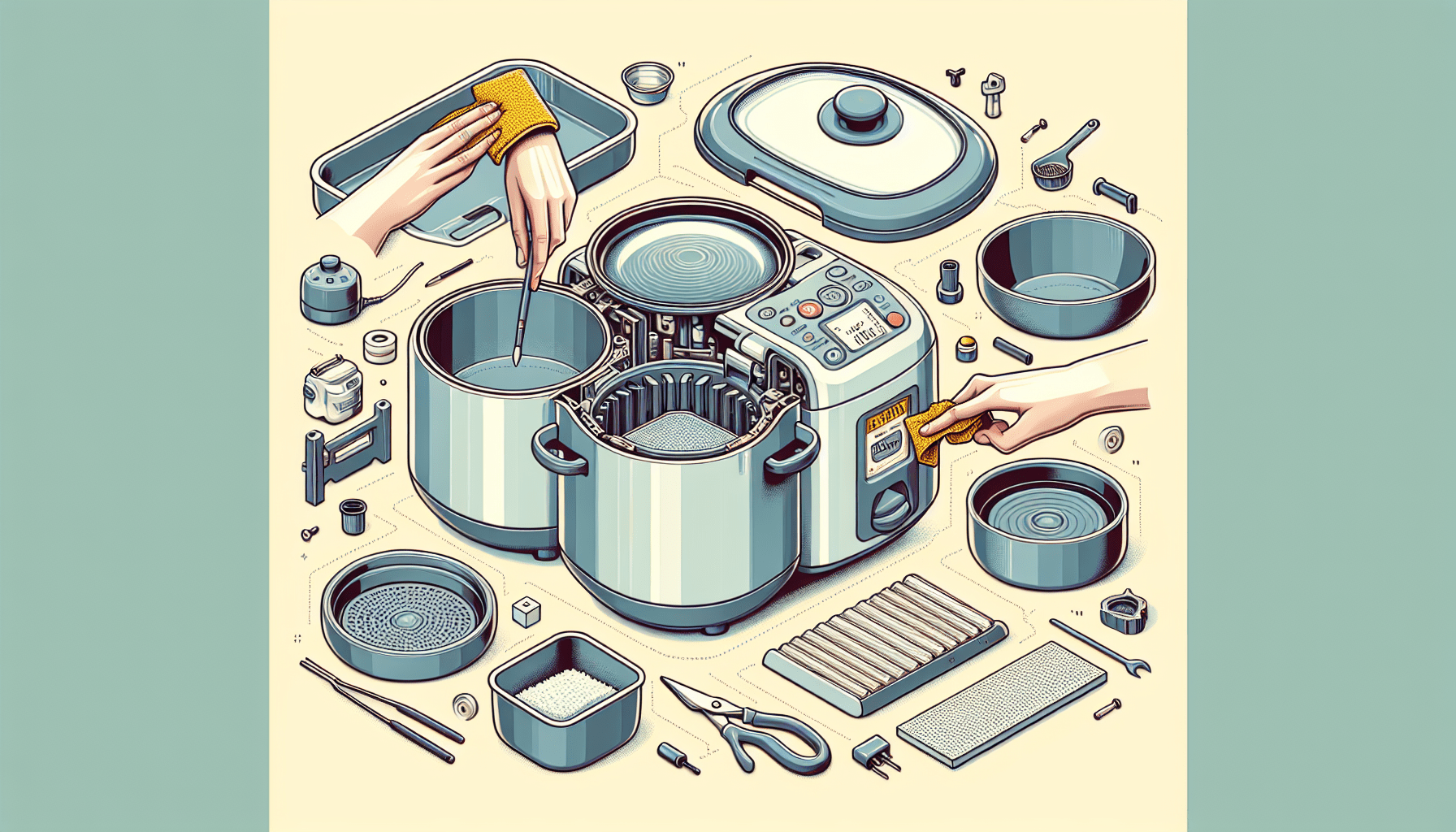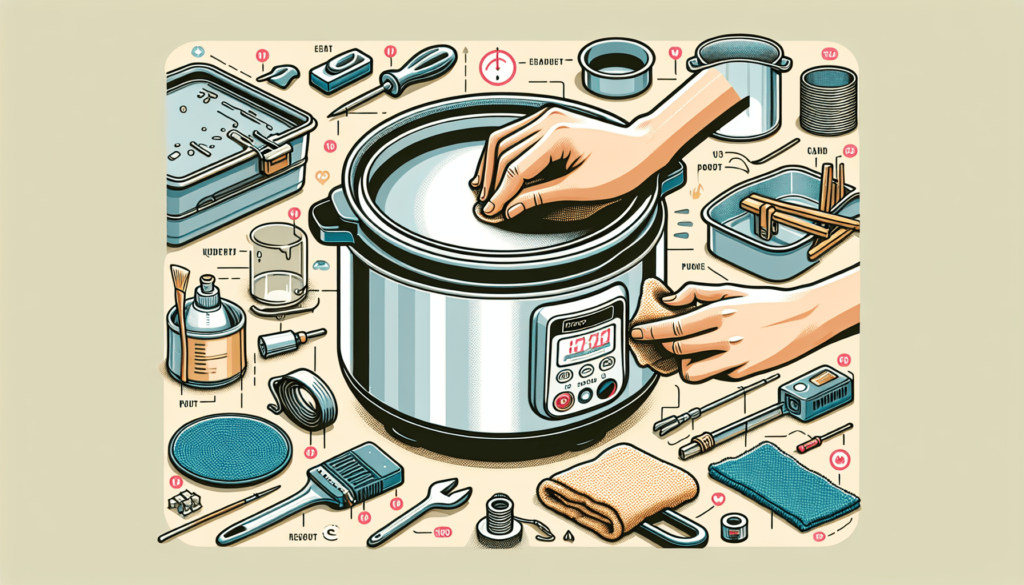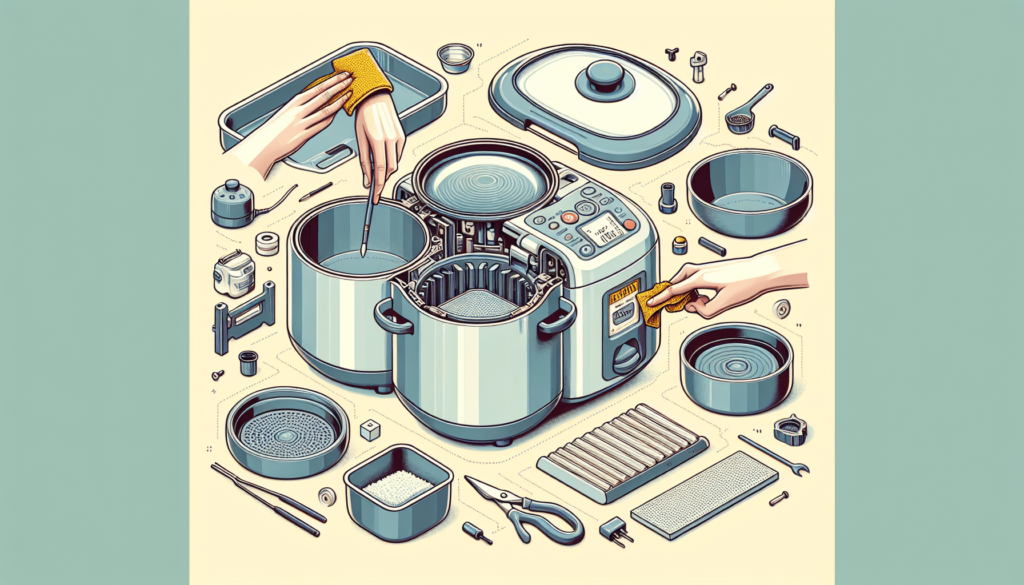
Hey there! If you’re a fan of delicious, fluffy rice cooked to perfection in your compact rice cooker, then you’ll want to make sure it’s properly maintained for long-lasting performance. In this article, I’ll share some easy DIY maintenance tips to keep your trusty kitchen appliance in top shape. From simple cleaning routines to troubleshooting common issues, you’ll be equipped with the knowledge and tools to ensure your compact rice cooker continues to serve up delicious meals for years to come. Let’s dive in and learn how to care for your beloved rice cooker! Have you ever felt overwhelmed by the thought of maintaining your compact rice cooker? Don’t worry – in this article, I’ll guide you through some DIY maintenance tips that will keep your rice cooker performing at its best for years to come.

Understanding Your Compact Rice Cooker
Before we dive into maintenance tips, it’s important to understand how a compact rice cooker works. These small appliances are designed to simplify the rice cooking process by automatically regulating temperature and cooking time. They typically consist of a heating element, a cooking pot, and a lid with a steam vent. Understanding the basic components of your rice cooker will help you better maintain it.
Basic Components of a Compact Rice Cooker
- Heating Element: This is responsible for heating the cooking pot to cook the rice.
- Cooking Pot: This is where you place the rice and water for cooking.
- Lid with Steam Vent: This allows steam to escape during the cooking process.
Understanding how these components work together will help you troubleshoot any issues that may arise with your rice cooker.
Cleaning Your Compact Rice Cooker
One of the most important maintenance tasks for your compact rice cooker is regular cleaning. Over time, food residue and mineral deposits can build up inside the rice cooker, affecting its performance and the taste of your rice. Here are some cleaning tips to keep your rice cooker in top condition.
Cleaning the Cooking Pot
- After each use, rinse the cooking pot with warm, soapy water to remove any food residue.
- For stubborn stains, soak the pot in a mixture of warm water and vinegar before scrubbing with a non-abrasive sponge.
- Avoid using harsh chemicals or abrasive materials that could damage the non-stick coating of the pot.
By regularly cleaning the cooking pot, you can prevent food buildup and maintain the quality of your rice.
Cleaning the Lid and Steam Vent
- Wipe the lid and steam vent with a damp cloth after each use to remove any condensation and food particles.
- Use a toothpick or brush to clean out any debris that may be blocking the steam vent.
- Make sure the vent is clear to allow steam to escape during the cooking process.
Keeping the lid and steam vent clean will ensure that your rice cooker functions properly.
Descaling Your Rice Cooker
- If you notice mineral deposits or scaling on the heating element or inside the cooker, it’s time to descale your rice cooker.
- Fill the cooking pot with equal parts water and vinegar and run a full cooking cycle without rice.
- Repeat this process with plain water to remove any vinegar residue.
Descaling your rice cooker regularly will prevent blockages and prolong the life of your appliance.

Troubleshooting Common Issues
Even with regular maintenance, you may encounter some common issues with your compact rice cooker. Understanding how to troubleshoot these problems can save you time and frustration. Here are some common issues and solutions to help you keep your rice cooker running smoothly.
Rice Cooker Not Turning On
- Check that the power cord is securely plugged into the outlet and the cooker.
- Ensure that the cooking pot is properly inserted into the cooker.
- If the cooker is still not turning on, try plugging it into a different outlet to rule out electrical issues.
By checking these simple things, you can often resolve the issue of your rice cooker not turning on.
Unevenly Cooked Rice
- Make sure you are using the correct rice-to-water ratio recommended for your rice cooker.
- Stir the rice before starting the cooking cycle to ensure even distribution of water.
- If you continue to experience unevenly cooked rice, try using a different type of rice or adjusting the cooking time.
By following these tips, you can achieve perfectly cooked rice each time you use your compact rice cooker.
Overcooked or Undercooked Rice
- If your rice is consistently overcooked or undercooked, you may need to adjust the cooking time for your specific rice cooker model.
- Experiment with different cooking times to find the perfect balance for your desired rice texture.
- Refer to the user manual for your rice cooker for recommended cooking times for different types of rice.
By adjusting the cooking time based on your preferences, you can avoid the frustration of over or undercooked rice.
Extending the Lifespan of Your Rice Cooker
With proper maintenance and care, your compact rice cooker can last for many years. Here are some additional tips to help you extend the lifespan of your rice cooker and enjoy perfectly cooked rice for years to come.
Avoid Overfilling the Cooking Pot
- Follow the recommended fill line markings on your cooking pot to avoid overfilling.
- Overfilling can cause the rice to spill over during cooking and may damage the heating element.
By following the recommended fill line, you can prevent damage to your rice cooker and ensure even cooking.
Store Your Rice Cooker Properly
- After each use, make sure your rice cooker is fully cooled before storing it.
- Avoid storing the rice cooker in a damp or humid environment, as this can cause mold and mildew growth.
- Store the cooking pot and lid separately to prevent odors from developing.
Proper storage will help prevent damage and maintain the functionality of your rice cooker.
Use Filtered Water
- If you live in an area with hard water, consider using filtered water in your rice cooker to prevent mineral buildup.
- Filtered water can improve the taste of your rice and reduce the need for frequent descaling.
Using filtered water can help maintain the performance of your rice cooker and the quality of your cooked rice.
Conclusion
Maintaining your compact rice cooker doesn’t have to be a daunting task. By following these DIY maintenance tips, you can keep your rice cooker in top condition and enjoy perfectly cooked rice every time. Remember to clean your rice cooker regularly, troubleshoot common issues, and follow best practices for storing and using your appliance. With proper care and attention, your compact rice cooker can continue to serve you well for years to come.